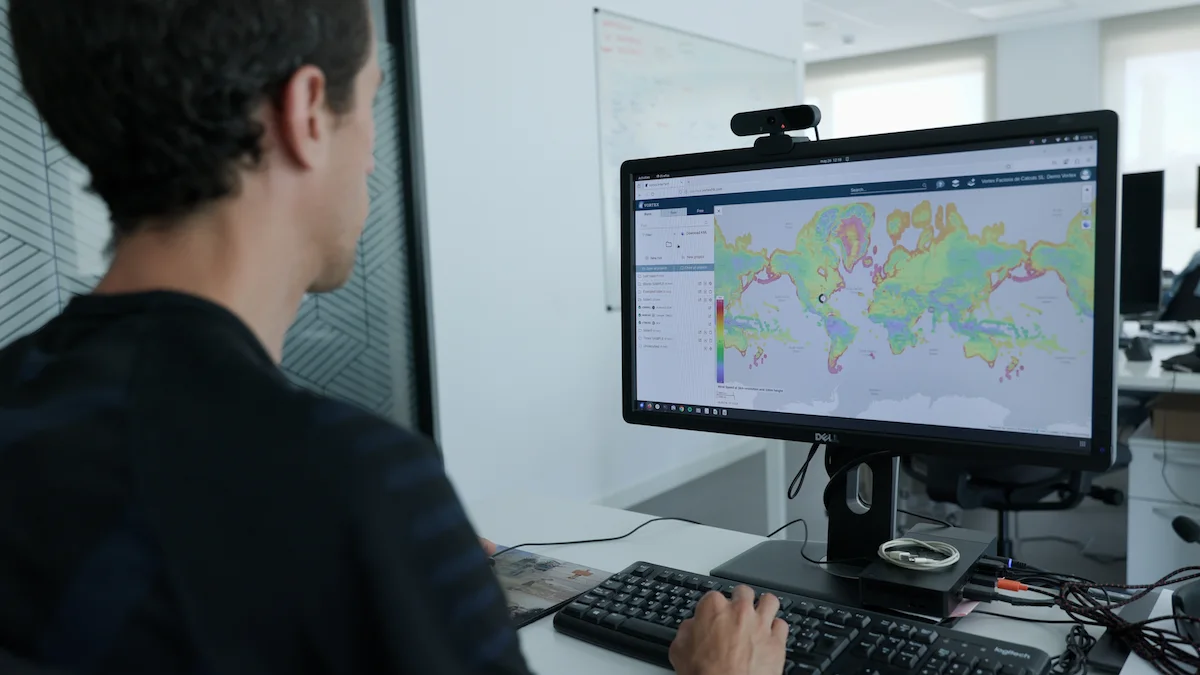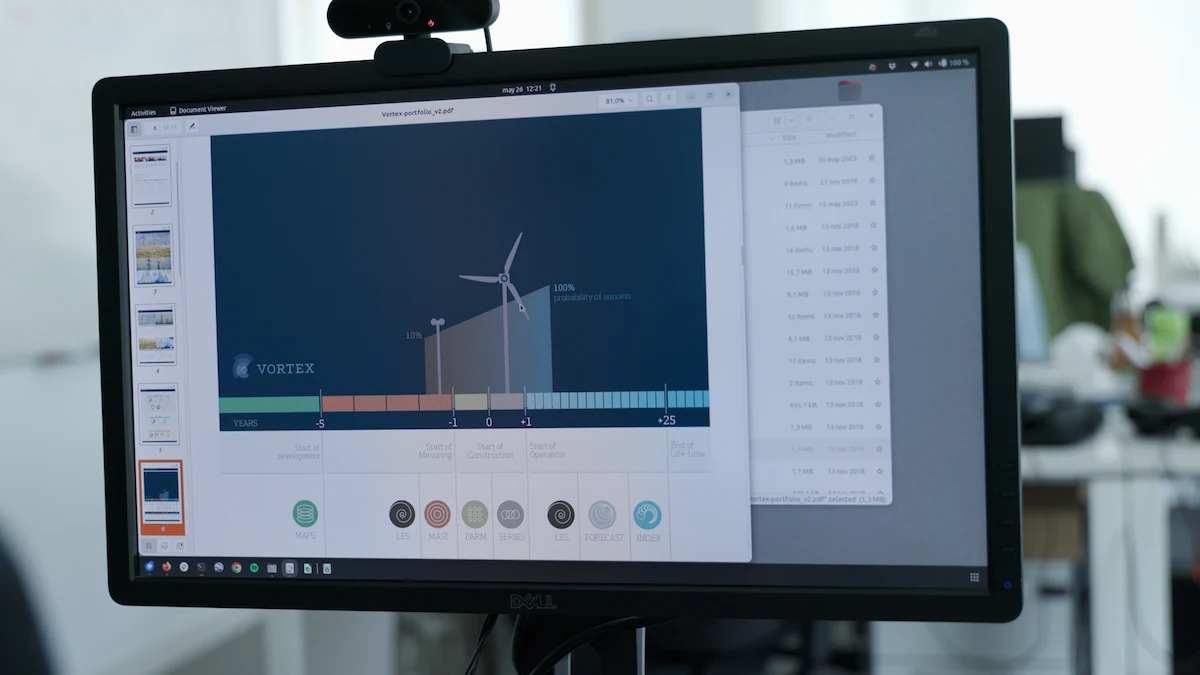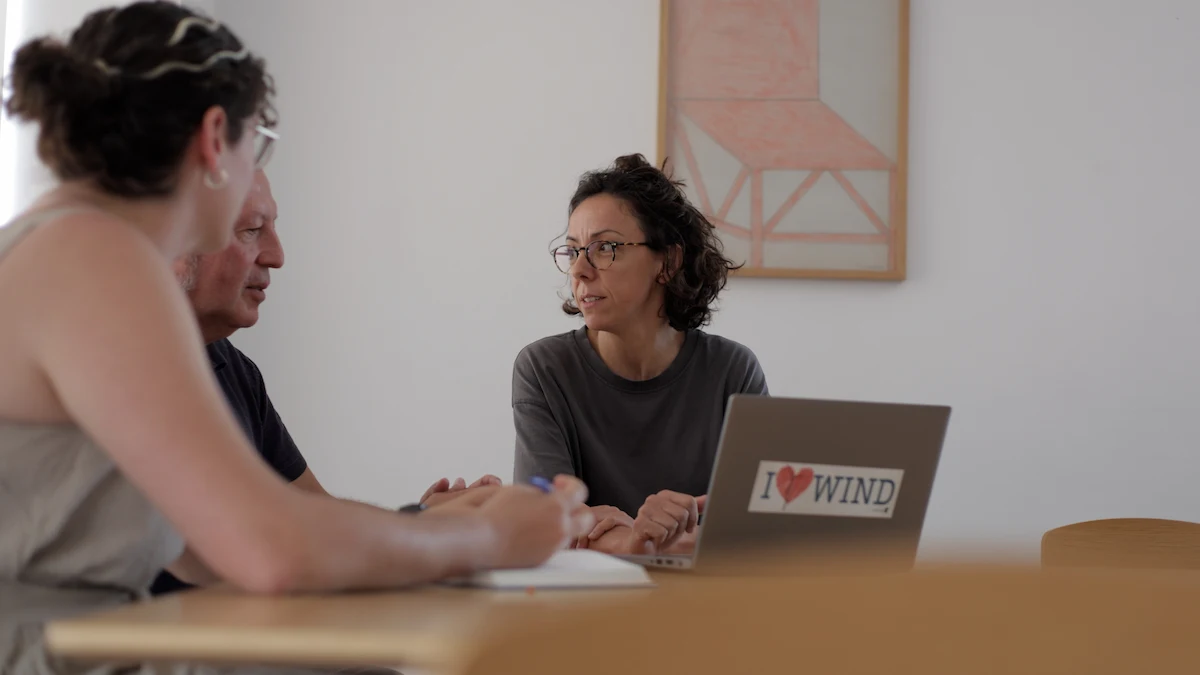Vortex Case Study: The past, present, and future of wind. Data that drives decisions.
A global wind data platform operating 24/7 thanks to reliable critical infrastructure.
The challenge
Vortex is a pioneering company in the generation of synthetic meteorological data for the wind energy sector. Its automated platform serves wind engineers around the world through a SaaS model: users independently access the platform, select a location and time range, and the system runs the necessary simulations without requiring technical team intervention. This model, based on intensive computation and 24/7 availability, demands robust, scalable infrastructure with zero margin for error.
The solution
Since 2009, Vortex has relied on Adam to host its computing cluster. With 12 racks distributed across two data centers and continuous technical support, Adam ensures the stability, connectivity, and operational continuity that VORTEX’s global service depends on.

Vortex was founded in 2005 in Barcelona, when its founders—engineers from the wind energy sector—identified the lack of reliable data for designing wind farms. In response, they developed a proprietary meteorological simulation model based on computational physics, capable of generating high-precision synthetic wind data.
Their technology replaces physical measurements—such as meteorological towers that require a full year of data collection—with simulations delivered in just a few days. This leap in efficiency accelerates decision-making in wind projects from the earliest stages.
Now present in over 100 countries, Vortex operates globally and has offices in the United States, India, and Thailand. It is also active in key markets such as Latin America, China, Australia, and Japan, where wind energy continues to grow as a response to the challenges of climate change.
Intensive computation and continuous availability
Since the beginning, Vortex has focused on delivering synthetic meteorological data generated using proprietary computational models. The service is fully automated and global: wind engineers can run simulations from anywhere in the world, at any time.
This requires robust critical infrastructure with guaranteed operational continuity. “A connectivity or power outage could compromise our entire operation,” explains Pau Casso, technical director at Vortex.

Complex data, uninterrupted service
Vortex emerged from a real technical need. Its founders—engineers with experience in wind energy development—identified a clear gap in the market back in 2005: there was no reliable, automated way to obtain high-quality meteorological data for assessing wind resources. That insight led to the creation of Vortex, with a clear goal: to develop technology capable of simulating wind behaviour anywhere in the world using proprietary physical models.
Over time, their on-demand digital platform has become an essential tool for wind engineers at more than 300 companies. But such an operational model requires IT infrastructure that guarantees total availability.
The first simulations were run from Vortex’s own offices, but cooling and energy limitations quickly became apparent. In 2009, the team began searching for a technology infrastructure partner in Barcelona —a data center where they could securely and flexibly host their own computing cluster. Cloud services were not yet a fit for their technical and operational model at the time.

“Our products enable decision-making even before measured data exists, with a very high level of accuracy built over two decades of work.”
Pep Moreno, CEO, Vortex
Adam’s solution: high-availability housing with local support
Vortex needed to scale its infrastructure with full technical guarantees. The challenge was to find a provider that could offer optimal conditions to host its own computing cluster—with direct physical access, reliable connectivity, and responsive support.
After evaluating several data centers in Barcelona, they chose Adam for its ability to meet both their technical and operational requirements. It was the only provider that offered:
- A technical and commercial proposal aligned with their operating model. Vortex has always worked with its own physical equipment, requiring space, power and connectivity without giving up direct control over its infrastructure.
- Physical access to the data center. At that time, cloud services were not a viable option due to cost and architecture constraints, and being able to intervene directly on-site was essential.
- A close, transparent, and flexible service. From the outset, Adam’s team provided effective support for both the initial setup and the infrastructure’s ongoing evolution.
Today, Vortex operates 12 fully occupied racks distributed across Adam’s data centers in Barcelona and Cerdanyola. This setup relies on an active geo-replication system that mirrors workloads and services across different physical locations, ensuring real operational continuity in the event of any incident. The infrastructure is physically distributed but operationally unified, which strengthens system resilience.
In addition, Adam provides 24/7 access, proactive technical support, and continuous assistance with key tasks such as energy monitoring and incident management.

“In over 15 years of working with Adam, we’ve never experienced a critical service outage or major issue related to power or connectivity. Communication with Adam’s technical team has always been proactive.”
Pau Casso, Technical Director, Vortex
Looking ahead: extreme precision and hybrid architecture
Vortex’s challenge is to maintain its leadership in data accuracy within an increasingly competitive landscape—one shaped by the growing availability of open data and the emergence of AI-based solutions. Its commitment remains clear: to deliver the most accurate wind data possible, supported by proprietary physical models, scientific validation, and expert supervision.
To strengthen this position, the company is exploring a hybrid architecture that combines its high-performance computing cluster with cloud resources to better manage peak demand. In this evolution, Adam remains a natural partner—both for its technical expertise and its ability to support demanding hybrid environments.
To address every segment of the market, Vortex also operates through three specialized spin-offs: one focused on short-term forecasts (hours or days), another on seasonal projections (up to 18 months), and a third dedicated to long-term modelling to assess the impact of climate change on wind resources. With this, the company expands its scope from analysing the wind of the past to anticipating the wind of the future.